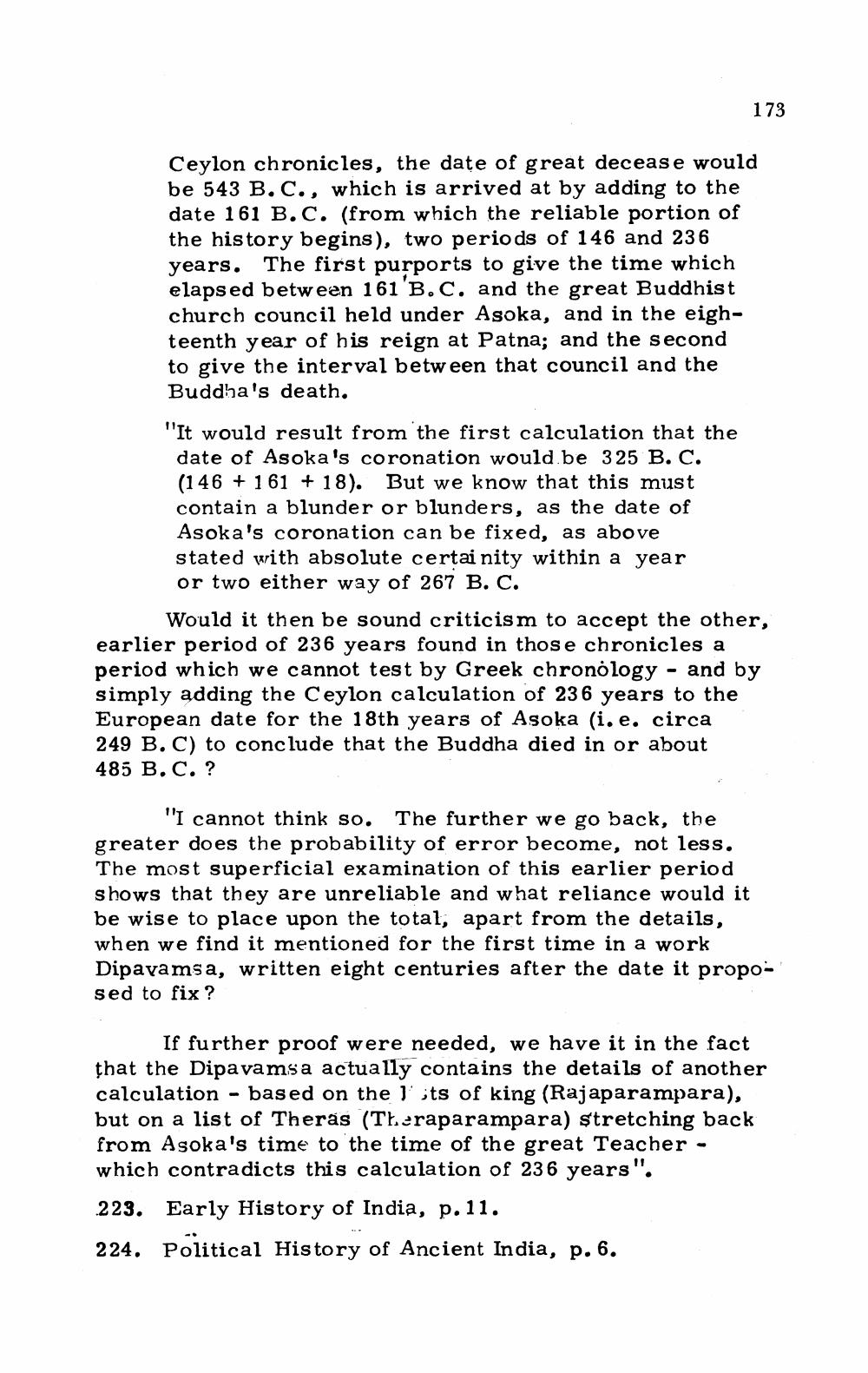________________
173
Ceylon chronicles, the date of great decease would be 543 B.C., which is arrived at by adding to the date 161 B.C. (from which the reliable portion of the history begins), two periods of 146 and 236 years. The first purports to give the time which elapsed between 161'B.C. and the great Buddhist church council held under Asoka, and in the eighteenth year of his reign at Patna; and the second to give the interval between that council and the Buddha's death.
"It would result from the first calculation that the date of Asoka's coronation would be 325 B. C. (146 + 161 + 18). But we know that this must contain a blunder or blunders, as the date of Asoka's coronation can be fixed, as above stated with absolute certai nity within a year or two either way of 267 B. C.
Would it then be sound criticism to accept the other, earlier period of 236 years found in those chronicles a period which we cannot test by Greek chronology - and by simply adding the Ceylon calculation of 236 years to the European date for the 18th years of Asoka (i.e. circa 249 B. C) to conclude that the Buddha died in or about 485 B.C. ?
"I cannot think so. The further we go back, the greater does the probability of error become, not less. The most superficial examination of this earlier period shows that they are unreliable and what reliance would it be wise to place upon the total, apart from the details, when we find it mentioned for the first time in a work Dipavamsa, written eight centuries after the date it proposed to fix ?
If further proof were needed, we have it in the fact that the Dipa vamsa actually contains the details of another calculation - based on the lits of king (Rajaparampara), but on a list of Theras (Tharaparampara) stretching back from Asoka's time to the time of the great Teacher - which contradicts this calculation of 236 years".
223. Early History of India, p.11. 224. Political History of Ancient India, p. 6.




